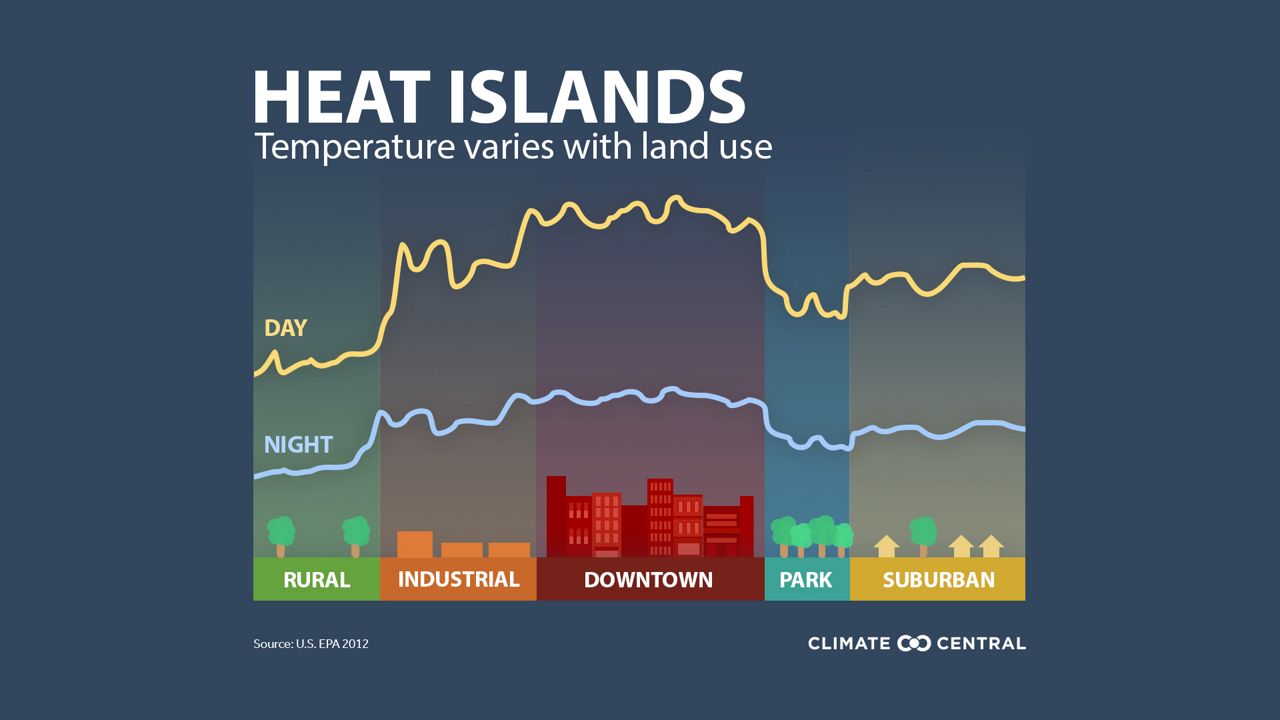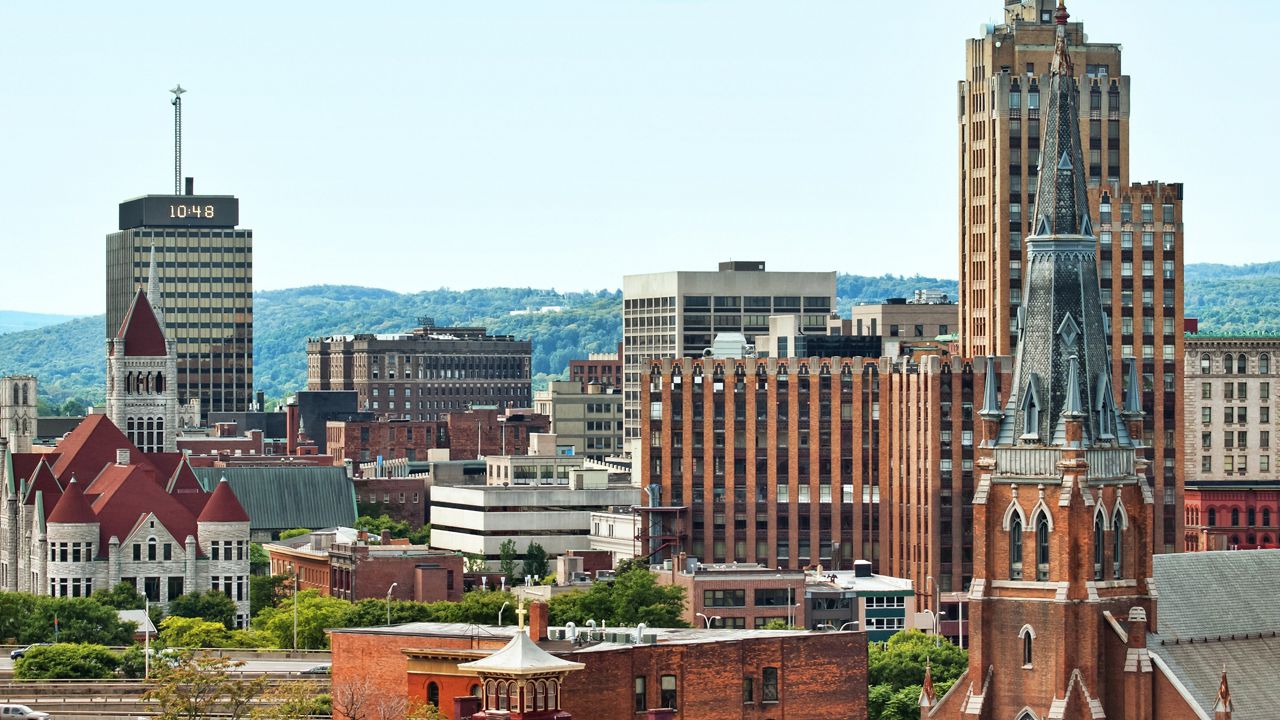We all know it has been a warm summer so far here in Upstate New York, but did you know city centers are usually hotter than the smaller towns around them?
We refer to this concept as an urban heat island.
Due to the infrastructure within a city, such as roads and buildings, and the lack of plant life, such as trees relative to areas outside the city, a place like downtown Syracuse would typically be warmer than suburbs like Baldwinsville or LaFayette.
Roads and buildings not only absorb heat during the day but also reradiate, push that warmth back out into the air, raising the temperature.

According to Climate Matters, who recently crunched the numbers on how much warmer numerous city centers are than their outlying surroundings, “neighborhoods in a highly-developed city can experience mid-afternoon temperatures that are 15-20 degrees hotter than outlying areas with more vegetation and less development.”
Based on this analysis, Syracuse can potentially get up to 6.1 degrees warmer on average than its less-developed surroundings because of its urban heat island status.
This index was calculated based on four main factors: albedo (reflectivity of surfaces), how much green space is present, the population and height of buildings in the city.
In other words, the more non-reflective surfaces such as parking lots and roadways and the less greenery there is to act as shade, the warmer the temperature will be.

Let's compare the intensity score for Syracuse to that of New York City, a more densely populated and developed place.
The Big Apple, by comparison, clearly has a greater potential for increased warmth as an urban heat island given the aforementioned factors, but the average magnitude of the warmth is only 1.5 degrees higher than that of Syracuse.

Given the science behind urban heat islands, when the weather gets hot and you are looking for a place to stay cool, a city center is not the place to do so.
The next time you see us show a high temperature map on Weather on the 1s and notice the bigger cities being a bit warmer, you will now know why.









